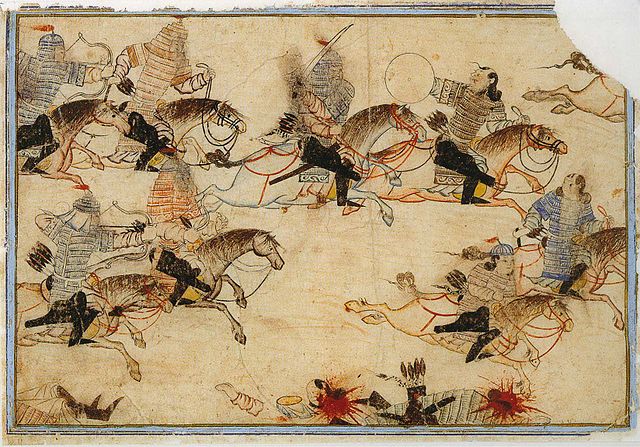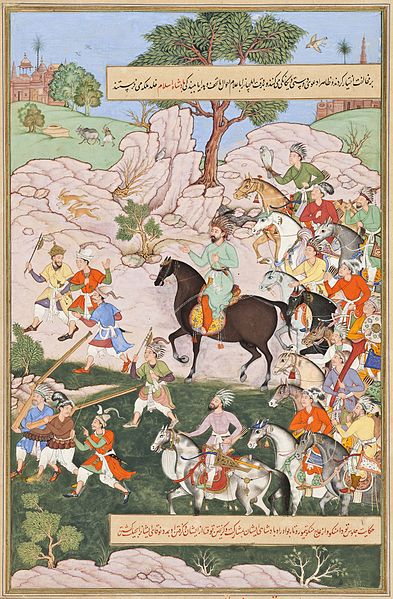
The Thammasat University Library has acquired a new book that should be useful for students interested in Asian history, sociology, political science, economics, and related fields.
The Horde: How the Mongols Changed the World is by Associate Professor Marie Favereau, who teaches history at Paris Nanterre University, France.
The TU Library collection also includes many other books about the Mongol Empire. The noun horde refers to a political subdivision of central Asian nomads.
Most histories of the Mongol Empire focus on their ability to conquer other people. Professor Favereau argues that that the Mongols had accomplishments that went beyond the battlefield. For three hundred years, Mongols were a force in global development, in a way comparable to what Rome had been. The Mongol legacy is still evident in Europe, Russia, Central Asia, and the Middle East today.
Associate Professor Favereau noted in an article published last year:
As a historian of the Mongol Empire, I’m aware of the deep impact of this period on our modern world. And yet I was struck by how contemporary figures seem threatened in some way by the medieval past. How could the emblematic leader of the Mongols, who died in 1227, still disturb the powers that be in modern-day China?
Genghis Khan and his successors took control of the Eurasian steppe belt, and expanded into the territories we call today China, Iran, Russia and Europe, shaping a mega-empire that eclipsed anything that the sedentary empires had achieved earlier. Through conquest, administration and trade, the Mongols profoundly changed the map of Eurasia, and in the 13th and 14th centuries, their Silk Road control integrated Eurasian peoples like never before. The Mongols were also able to build and maintain regime by absorbing and harmonizing the different societies and cultures of their subjects, rather than destroying them; this reveals the inherent power of their kinship system, which had the capacity to integrate newcomers. The Mongols’ all-embracive attitude toward family, religion and work, and their ambition to generate an increasing circulation of goods, technologies and peoples, was a kind of precursor for the Columbian Exchange of the early 16th century.
Yet, in many historiographies – not just China’s, but also Russia’s, Iran’s and Europe’s – the Mongol era is seen not a key macro-historical phenomenon in global history, but as a regressive stage of human economic and cultural development.
Why do Genghis Khan and nomads, more generally, so deeply upset the supporters of nation-states? First, the history of the Mongol Empire is a shared legacy that does not fit into narratives centred on monolingual, monoethnic and monoreligious communities. Second, nationalists have yet to accept that civilization is not necessarily a product of urban and sedentary development. Third, our traditional world history narrative is the success story of the sedentary world from the perspective of the sedentary peoples. In fact, over two millennia, humanity witnessed the rise and fall of several nomadic empires that profoundly shaped our history on continental scale. But this world-shaping phenomenon remains poorly understood, and nomadic empires are seen as marginal or secondary historical phases.
To challenge the misconceptions about the role of nomads in history, we need to tell their story through their eyes and from their points of view. Empire-building nomads had open cities, oral paperwork, coins and passports; they were trade geniuses with a profound understanding of ecology; they were cultural brokers, religiously tolerant, integrative and liberal; they had their own sense of loyalty, competition, violence, success, death and transgression. Nomadism is not a primitive stage on the path to modernization; it is simply a different choice.

The Horde: How the Mongols Changed the World explains,
Hordes—the khan’s and the others’—were more strictly organized than any sedentary city of the day. Moving in massive numbers required extreme discipline from humans and animals. Mongol horses were especially impressive. When dismounted, these horses were trained to follow their riders and could return to camp on their own. Mongol horses also did not need fodder; they fed themselves in winter by seeking grass under the snow, allowing them to survive where no other horses could. Westerners compared them to dogs, a compliment concerning the horses’ resourcefulness.
When setting camp, people knew exactly where to pitch their mobile homes. The tents were always positioned with the entrance door facing south. The camp formation was designed to regulate people and animals and ensure that everyone respected each other’s status. A settled horde integrated precedence of rank and lines of descent into its layout, with the khan’s tents in the center and other tents lined up west and east.
But the organization was not only a matter of status, for the camp layout bore a symbolic meaning. By positioning themselves according to the cardinal directions, inhabitants oriented themselves in space, society, and the cosmos. Birth, death, and politics altered the configurations of the moveable cities. Their flexibility made them more adaptable to changing circumstances than were sitting cities. The layout of a settled horde reflected its shifting social organization, and one could read from its plan whether the people were at war or peace.
The defense system of the Mongol camps was based on a circular layout called güre’en, the ring. To protect themselves against enemies and strangers, the Mongols camped in a circle, with the horde’s chief in the center. The Jochids settled in ring-camps during hunting parties and wars or when a small group had to travel across the steppe. In times of peace, they opted for the linear layout with the khan’s tents in the center. When needed, the horde could turn into a war machine almost instantly, providing the mobility required for swift attacks and strategic retreats.
Contemporaries thought the horde was the safest place on earth. Not only did the circle provide protection against marauders, enemies, and wild animals, but the location of hordes near rivers also limited the effects of fires. The shape of the horde further served to diffuse social discord by avoiding concentrations of people in overpopulated districts. The moveable city could always be extended to accommodate more people. Shift men kept watch day and night, but a horde was not a military camp, and women and children always outnumbered armed horsemen. In the early 1250s the Jochid hordes enjoyed peace after half a century of nearly constant warfare, and they adapted their moveable cities to take advantage of that peaceful life…
Not only did women run the camp, they also owned the households. They would host their husbands regularly, as a husband had to switch homes often to visit each of his wives. This was a common practice at all levels of society, reflecting both the design of Mongol camps—prioritizing mobility—and of the decision-making power invested in women of all social classes. Rubruck noted that Batu’s twenty-six wives each had her own “large house,” and these were accompanied by smaller ones serving as “chambers in which their attendants live.” Sartaq, meanwhile, had six wives and his eldest son two or three. Rubruck counted “a good two hundred carts” belonging to each wife’s home. Spouses had assigned places in the camp layout reflecting their rank: the chief wife at the extreme west and the last wife at the far east.
Because the camp could be extended, the Mongols were able easily to accommodate newcomers, including traders, diplomats, wandering scholars, and religious men, any of whom would immediately be assigned homes. The security and social order within the camps impressed these visitors, who were used to city life. “Fights, brawls, wounding, murder, are never met with among them. Nor are robbers and thieves who steal on a large scale found there,” Plano Carpini observed. “Consequently their dwellings and the carts in which they keep their valuables are not secured by bolts and bars. If any animals are lost, whoever comes across them either leaves them alone or takes them to men appointed for this purpose.” Plano Carpini noticed that, in general, the Mongols were unusually respectful of each other.

(All images courtesy of Wikimedia Commons)
